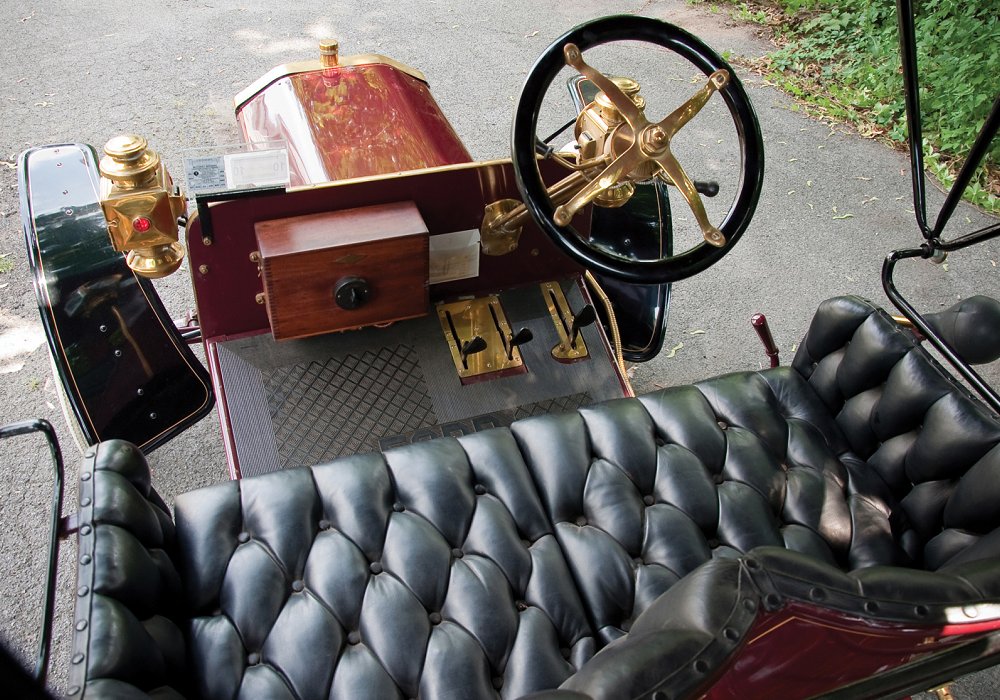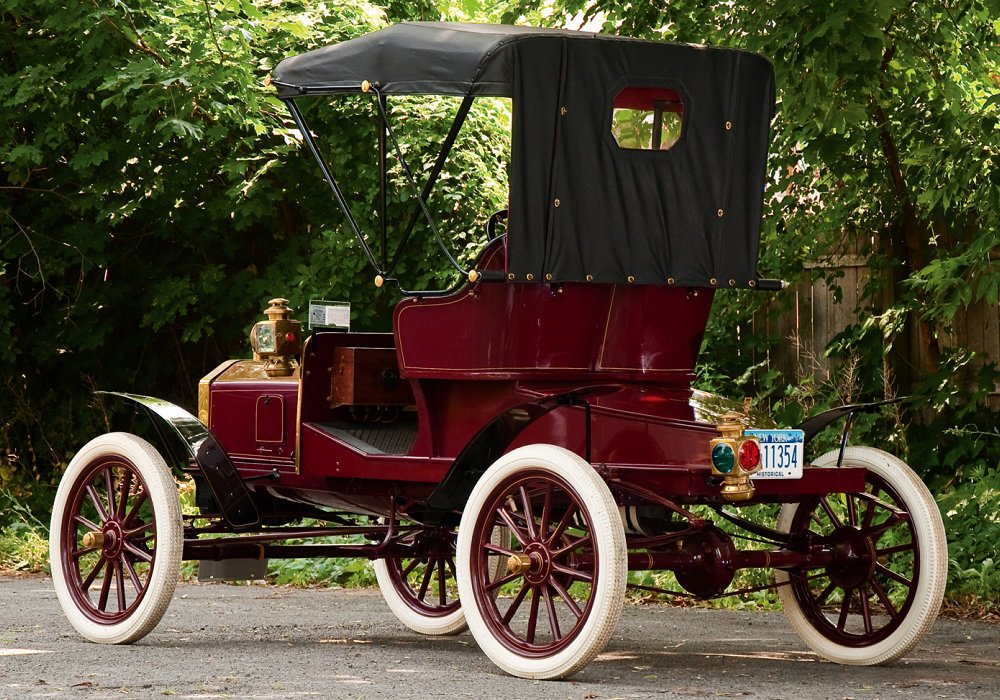Description
The Ford Model N Runabout, introduced in 1906, was one of the most important early steps in Henry Ford’s quest to build a truly affordable automobile for the mass market. Coming after the more expensive Ford Model K and the earlier two-cylinder cars, the Model N was designed as a simple, reliable, and low-cost four-cylinder machine that could reach a wide audience. It proved to be Ford’s best-selling model before the arrival of the legendary Model T.
The Model N Runabout was powered by a front-mounted, 149 cubic inch (2.4-liter) inline four-cylinder engine producing about 15 horsepower. This gave it enough power to reach speeds of 30 to 35 miles per hour, making it practical for the roads of the time. The engine was water-cooled and linked to a two-speed planetary transmission, a design that Henry Ford favored for its ease of operation, and which would later be perfected in the Model T. Power was transmitted to the rear wheels by chain drive.
The car was built on a lightweight steel chassis and featured a wheelbase of 84 inches. Its suspension used transverse leaf springs, a design that would become a hallmark of Ford cars for decades. The body style was a simple runabout—an open two-seater with a basic wooden body, a folding top available as an option, and no doors. A detachable rear tonneau could be fitted to add two extra seats, turning it into a four-passenger car. Steering was by wheel rather than tiller, reflecting the industry’s move toward modern controls.
One of the greatest strengths of the Model N Runabout was its price. At $500, it was the cheapest four-cylinder car on the American market at the time, undercutting many rivals that cost significantly more. Despite its low cost, it was well-built and reliable, making it popular with middle-class buyers who had previously been excluded from automobile ownership. Between 1906 and 1908, Ford sold around 7,000 Model Ns, a remarkable figure for the era and a strong indication of the demand for affordable, practical cars.
The Model N proved so successful that it spawned updated versions: the Model R with a larger body and more trim, and the Model S with further refinements. All were based on the same mechanical foundation, showing the versatility of the platform. Together, these cars established the principles that Henry Ford would later refine into the mass-produced Model T: simplicity, durability, affordability, and ease of use.
Today, the Ford Model N Runabout is remembered as one of the key stepping stones in automotive history. While it lacked the fame of the Model T, it was the first Ford to truly embody the philosophy of a “car for the people.” Its success gave the company both the confidence and financial strength to pursue even greater ambitions, setting the stage for the automobile revolution that would follow.




